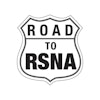Sunday, December 1 | 10:50 a.m.-11:00 a.m. | S2-SSGI02-3 | Room E352
In this session, attendees will find out whether it’s safe to go beyond regulatory limits for acoustic output of shear-wave elastography (SWE) in quantifying liver fibrosis.
Kim Naja, MD, from Massachusetts General Hospital in Boston, MA will present her team’s findings, showing that increased energy SWE is safe, reduces measurement variability, and may increase image acquisition efficiency.
“This may improve diagnostic evaluation in challenging to image high body mass index patients at risk for metabolic dysfunction-associated steatotic liver disease (MASLD),” the Naja team highlighted.
The researchers conducted a study involving 22 participants who received conventional (mechanical index 1.4) and increased energy (mechanical index 2.5) SWE using a commercial scanner (GE HealthCare LOGIQ E10 with a GE C1-6 curved abdominal ultrasound probe).
The team obtained 10 conventional and 10 conditionally increased acoustic output measurements with up to 20 attempts each if initially nondiagnostic. The participants underwent blood liver function testing less than 48 hours prior to imaging and one day after imaging.
Of the 22 participants, six were of normal body mass index (BMI), six were considered overweight, seven had class I obesity, and three had class II obesity.
The average interquartile range to median ratio was 0.0659 for standard SWE and 0.0466 for conditionally increased acoustic output. The ratio decreased by 0.019 across exams (p = 0.01) and the average number of attempts decreased by 0.68 (p = 0.058).
The results suggest that increased energy SWE caused no increase in liver function tests to suggest liver injury.
Find out more by attending this session.


